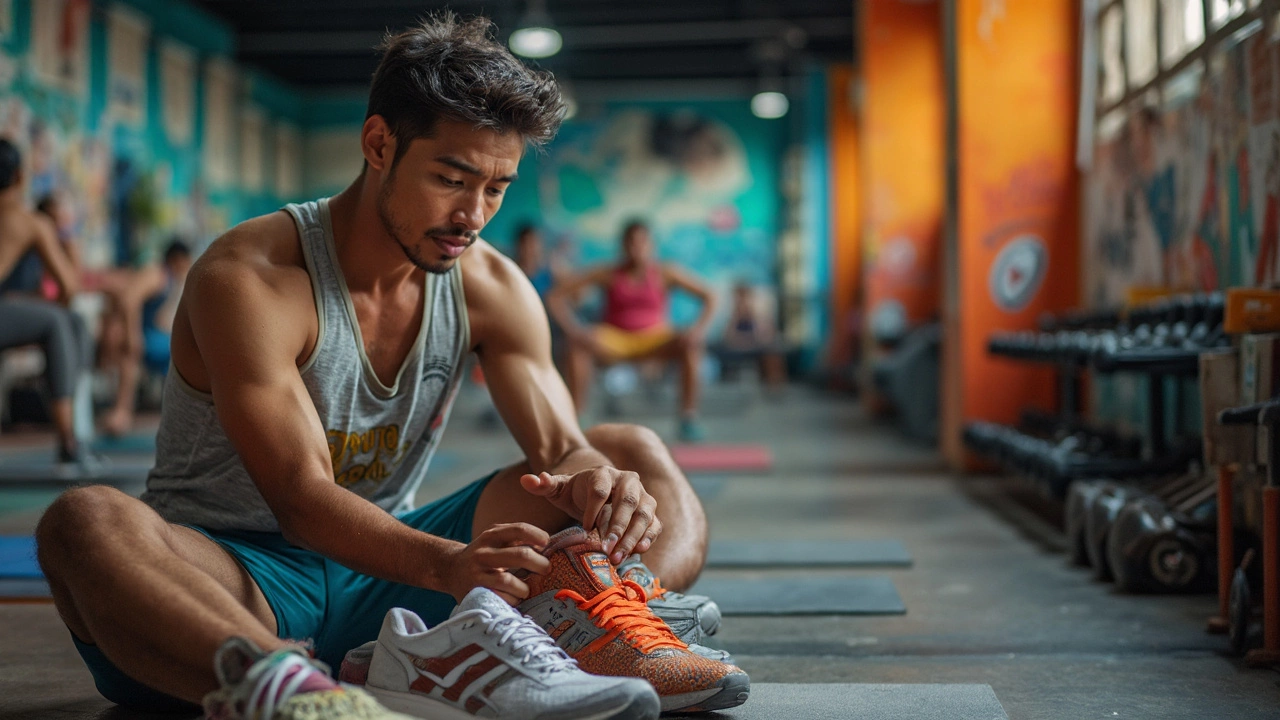Exercise Footwear: Pick the Right Shoes for Every Workout
Ever bought a pair of sneakers that felt great in the store but fell apart after a few runs? You’re not alone. The right exercise footwear can make the difference between a solid session and a painful reminder to upgrade. Below you’ll get straight‑to‑the‑point advice on how to choose shoes that actually work for you, plus a quick rundown of the best options for running, gym work, and cross‑training.
How to Choose the Right Exercise Footwear
First thing’s first: know your foot type. If you have a flat arch, look for stability shoes that control pronation. High arches need extra cushioning to absorb impact. You can tell a lot just by standing on a piece of paper – if the imprint shows most of your foot, you’re probably neutral; if the heel and front are dark, you likely over‑pronate.
Second, think about the activity. Running shoes focus on forward motion, so they’re light, have a flexible sole, and plenty of heel cushioning. Gym shoes, especially for weight‑lifting, need a firm, flat base to keep you stable under heavy loads. Cross‑training shoes sit in the middle: enough cushion for short runs, but a sturdy sidewall for lateral moves.
Fit matters more than brand. When you try shoes on, wear the socks you normally train in. Slide your foot forward until you feel a thumb’s width between the longest toe and the front edge of the shoe. Your heel should stay in place; any slipping means the fit is off.
Don’t forget durability. Look for reinforced toe caps if you do a lot of lunges or plyometrics. A breathable mesh upper helps with sweat, but a bit of leather or synthetic overlay adds support where you need it.
Top Picks for Different Activities
Running: For most runners, a shoe with responsive foam and a snug heel counter is a winner. Models like the Nike Air Zoom Pegasus or the Asics Gel‑Nimbus offer a good mix of cushioning and durability without breaking the bank.
Gym/Weight‑Lifting: If you spend most of your time under the bar, a shoe with a flat, firm sole is ideal. The Reebok Nano series or the Nike Metcon line give you a stable platform and enough grip for rope climbs.
Cross‑Training: Need a shoe that can handle sprints, jumps, and a quick HIIT circuit? Look for an outsole with multidirectional traction and moderate cushioning. The New Balance Minimus or the Under Armour TriBase are solid choices.
Remember, shoes lose their shock‑absorption after about 300‑500 miles. Keep a mileage log on your phone, and when the cushioning feels less springy, it’s time for a swap.
Finally, trust your gut. If a shoe feels uncomfortable during the first five minutes, it probably won’t get better. The best exercise footwear lets you focus on the workout, not on blisters or wobbling soles.
Take these tips, test a few pairs, and you’ll walk out of the gym ready for your next challenge. Happy training!
